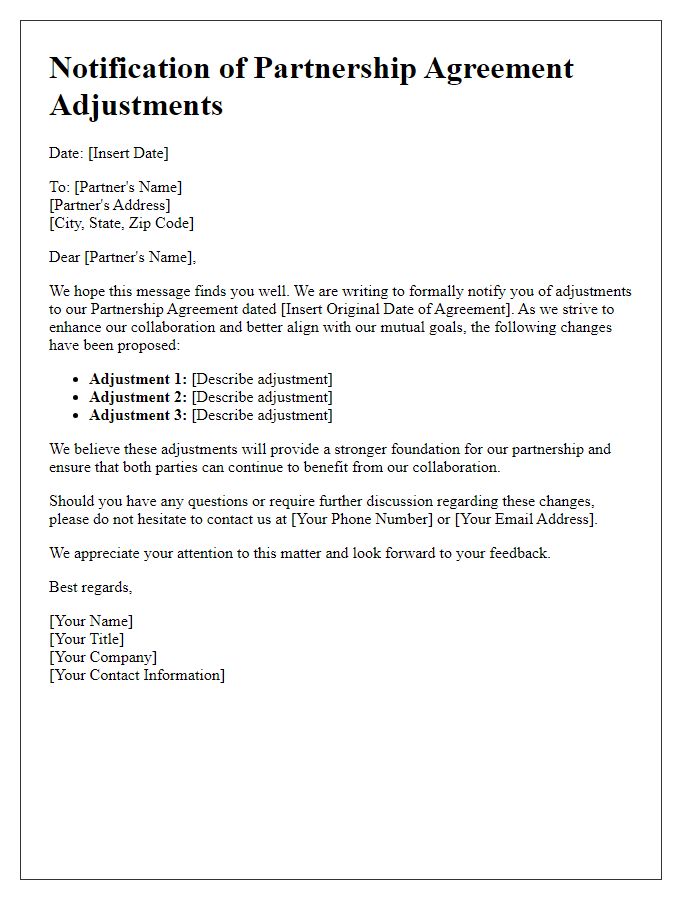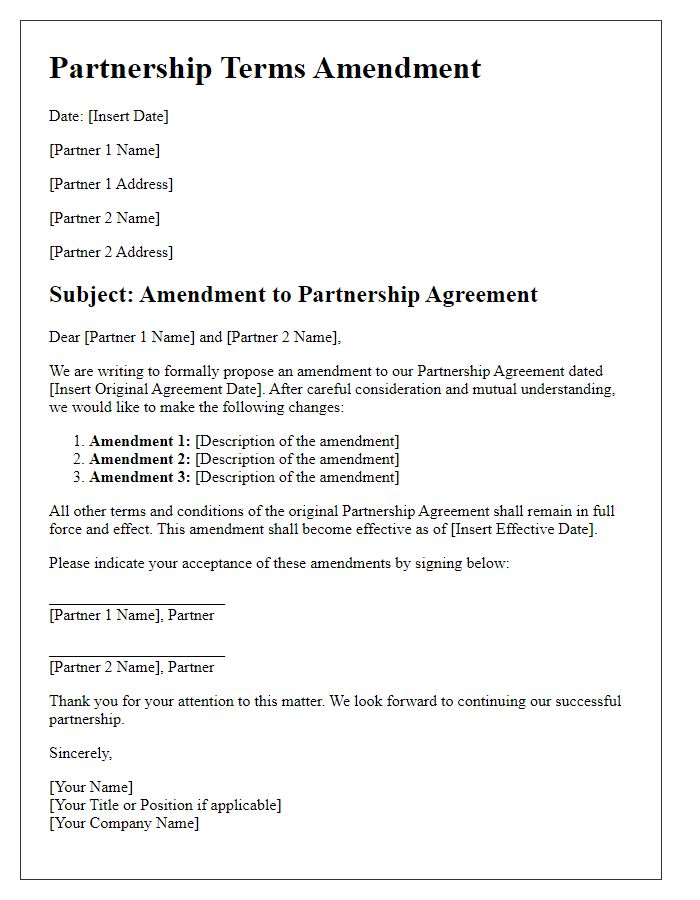Are you considering amending an existing partnership agreement? Crafting a clear and concise letter can make all the difference in ensuring that all partners are on the same page. In this guide, we'll walk you through essential elements to include in your letter, ensuring that any changes are formalized and easily understood. So, let's dive in and explore how to get started with your partnership agreement amendments!

Clear Identification of Parties
The partnership agreement amendments require a clear identification of parties involved in the agreement. Each partner must be distinctly named, including full legal names and any relevant business entities. For example, a sole proprietor may be identified as John Smith, while a corporation may be referred to as XYZ Ltd. Each party's registered address must also be specified, such as 123 Main Street, Springfield, IL, to ensure proper identification and avoid any potential legal ambiguities. This clarity is vital to uphold the integrity of the agreement and facilitate accurate communication between the partners throughout the term of the partnership.
Specific Amendment Details
Specific amendments to partnership agreements often involve changes in key components such as ownership percentages, roles and responsibilities, or financial contributions. For instance, amending the ownership percentage from 50-50 to 60-40 can significantly impact profit distributions and decision-making authority. Additionally, altering responsibilities, such as designating one partner primarily for operations while the other focuses on marketing, clarifies functions and expectations. Financial contributions, like increasing one partner's commitment from $50,000 to $75,000, can also adjust the dynamics of equity and control. These specific amendments should be meticulously documented to ensure clarity and mutual consent among all partners involved.
Effective Date of Changes
A partnership agreement amendment typically requires clear communication regarding the effective date of changes. The effective date represents the moment when the newly amended terms come into force. It is critical to specify this date to ensure that all parties involved in the partnership, whether operating in sectors such as small business or large corporate frameworks, understand when the modifications apply. For instance, if two partners agree to amend revenue-sharing provisions, specifying an effective date can help prevent any confusion regarding profit distribution, which might occur in the following fiscal quarter. Furthermore, ensuring the date is mutual and documented effectively in the partnership agreement can protect against potential disputes and reinforce clarity in operational guidelines moving forward.
Signatures of All Parties Involved
The signatures of all parties involved in the partnership agreement amendments signify mutual consent and acknowledgment of the revised terms. Each party, identified by name and role, must provide a handwritten signature along with the date of signing. This procedural step ensures that all collaborators, including legal entities or individuals, demonstrate their commitment to the updated agreement. Proper documentation plays a critical role in maintaining clarity and preventing future disputes regarding the specific amendments in the partnership agreement. Ensuring that all signatories understand the implications of these changes is fundamental in fostering a cooperative business relationship moving forward.
Legal Compliance and Jurisdiction
In the context of partnership agreements, legal compliance ensures that all amendments adhere to the governing laws and regulations applicable within the jurisdiction (a defined area of legal authority, usually a state or country) where the partnership operates. For instance, compliance with the Uniform Partnership Act (UPA) in the United States requires any significant changes to be documented in writing and agreed upon by all partners to maintain the integrity of the partnership. Additionally, jurisdiction refers to the authority granted to legal bodies to make decisions and enforce laws, which may vary depending on the partnership's registered location. A thorough understanding of both legal compliance and jurisdiction prevents disputes and legal challenges, thus providing a stable framework for partnership operations and decision-making processes.













Comments